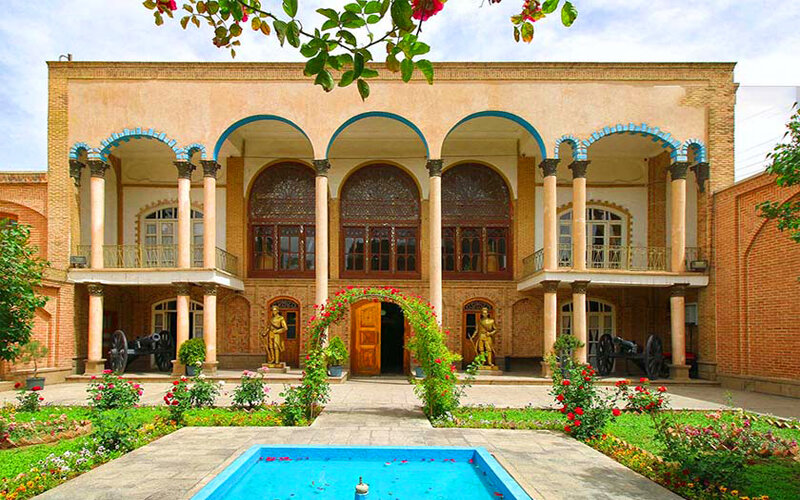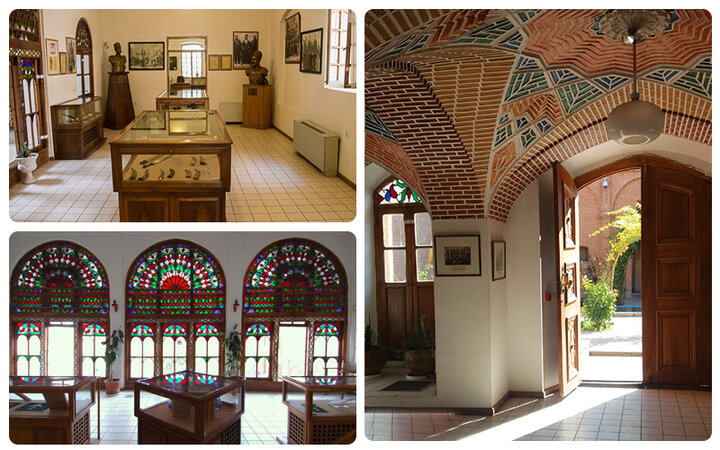Constitution House of Tabriz: where Iran’s struggle for democracy has its roots in

TEHRAN - Nestled beside the historic bazaar of Tabriz in the heart of northwest Iran, the Constitution House of Tabriz -- locally known as Khaneh Mashrouteh -- stands as a powerful symbol of Iran’s early democratic aspirations.
With a legacy rooted in the Persian Constitutional Revolution (1905–1911), this remarkable two-story Qajar-era building now serves as a museum and cultural landmark, drawing tourists, historians, and patriots alike to witness a pivotal chapter in Iranian history.
Built in 1868 by Haj Mehdi Kouzeh-Kanani, a prominent merchant and avid supporter of the Constitutional movement, the house quickly transformed into a hub for political resistance. The 1,300-square-meter structure once hosted secret meetings, underground publications, and coordinated efforts that challenged the absolute power of the Qajar monarchy.
During the revolutionary years, the house welcomed some of the most prominent figures of the movement, including Sattar Khan, Bagher Khan, Seqat-ol-Eslam Tabrizi, and Haji Mirza Aqa Farshi.
His home became a safe haven for strategizing, printing anti-monarchy texts, and rallying constitutionalists during the most turbulent years of modern Iranian history.
The house’s architectural splendor is equally captivating. Built in the elegant Qajar style, it features tall arched windows, intricate wood carvings, and a stunning conical skylight that illuminates the mirror hall, often considered the most beautiful part of the building. The play of natural light through stained-glass windows adds a serene yet powerful ambiance to a place once filled with revolutionary urgency.

Today, the Constitution House functions as a museum, meticulously preserving the spirit of resistance and reform. Its first floor exhibits lifelike statues of constitutional heroes, personal belongings like Sattar Khan’s dagger, rare photographs, underground newspapers, and the original printing press used for revolutionary publications. Visitors can also see the Constitution Carpet and documents chronicling the struggle for a parliamentary system in Iran.
Recognized as a national heritage site in 1975, the building reopened to the public in 1996 following extensive renovations. It remains the most famous and prestigious historical house in Tabriz, offering visitors a rare blend of political legacy and architectural beauty.
The city of Tabriz, known for its rich history, warm hospitality, and the UNESCO-listed Grand Bazaar, remains a key gateway for visitors, particularly those entering Iran from Armenia and Turkey.
Tabriz has a long and rich history. It became the capital of the Mongol Il-Khan Mahmud Gazan (1295–1304) and his successor. Timur (Tamerlane), a Turkic conqueror, took the city in 1392. Some decades later, the Kara Koyunlu Turkmen made it their capital, and it was then that the famous Blue Mosque was built in the ancient city.

Tabriz retained its administrative status under the Safavid dynasty until 1548, when Shah Tahmasp I relocated his capital westward to Qazvin. During the next two centuries, the Iranian city of Tabriz changed hands several times between Persia and the Ottoman Empire. During World War I, the city was temporarily occupied by Turkish and then Soviet troops.
The largest economic hub and metropolitan area in northwest Iran, Tabriz represents an essence of Iran's architectural transition throughout its long history.
AM
Leave a Comment